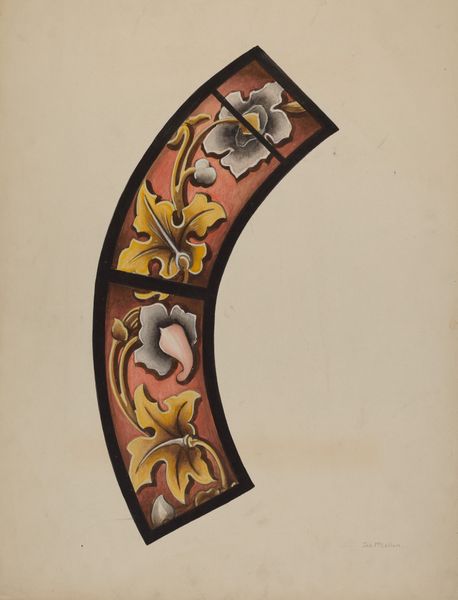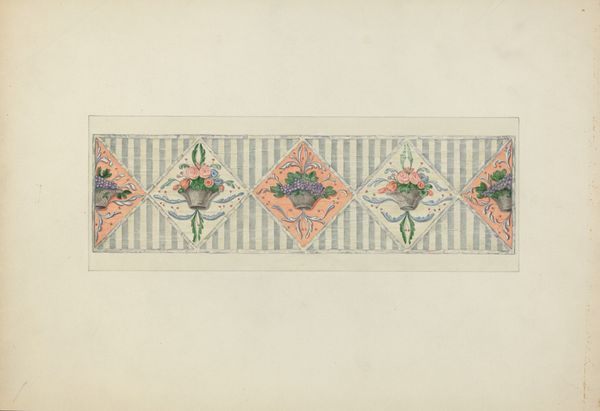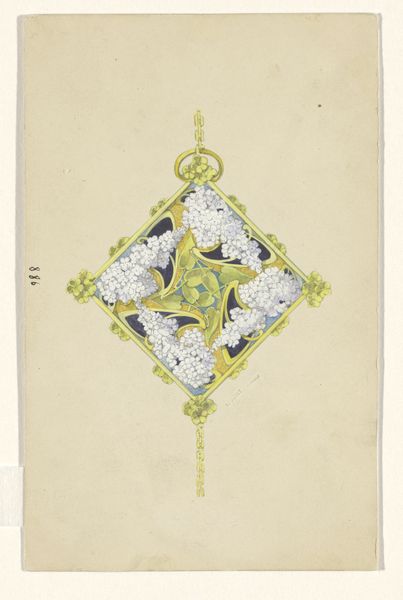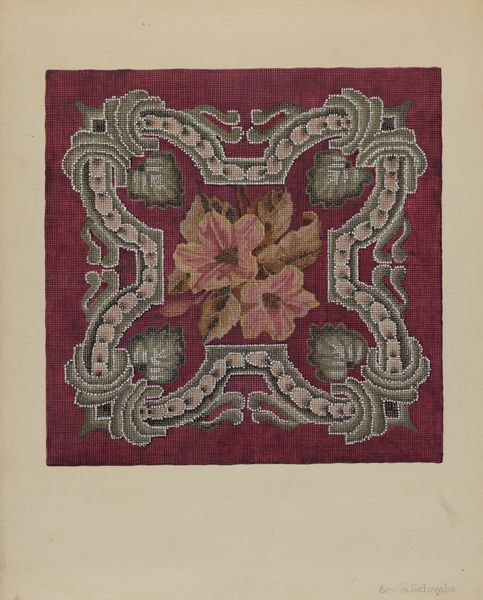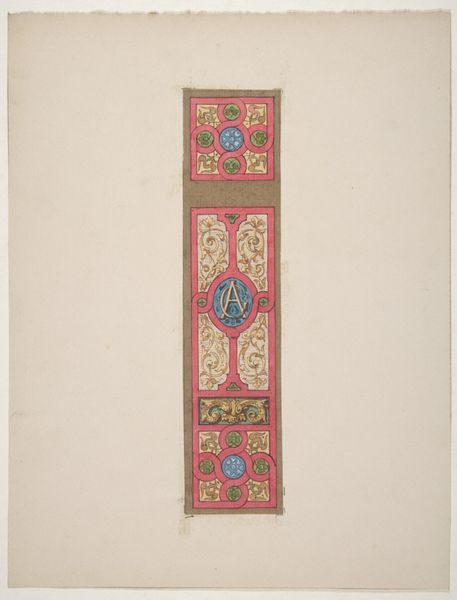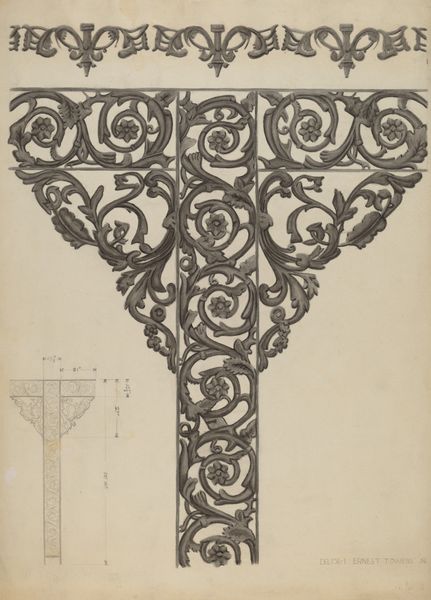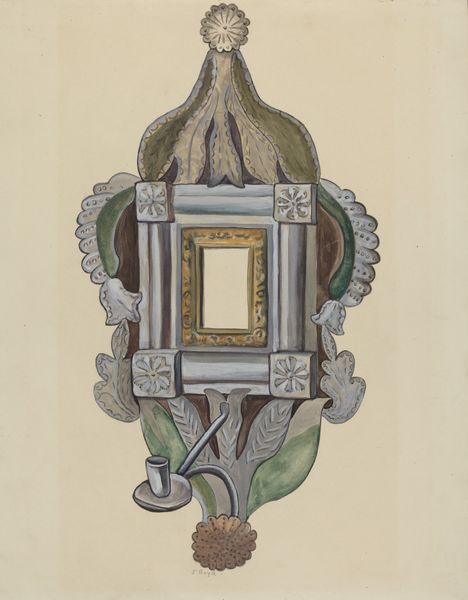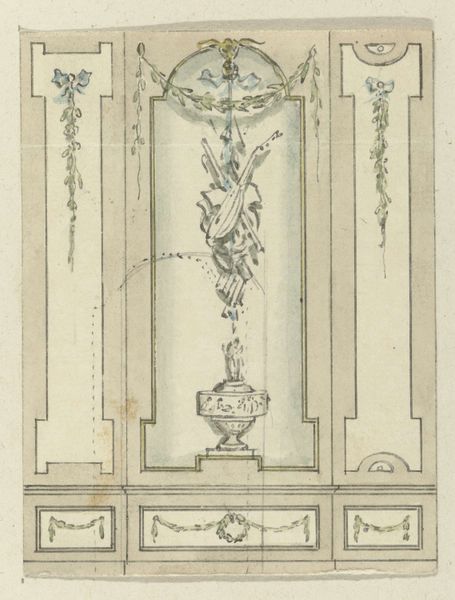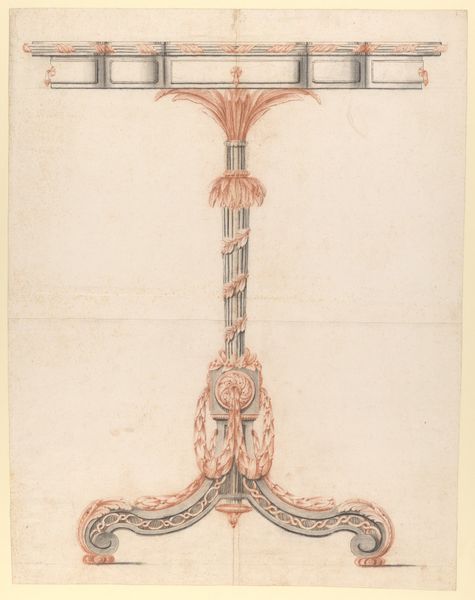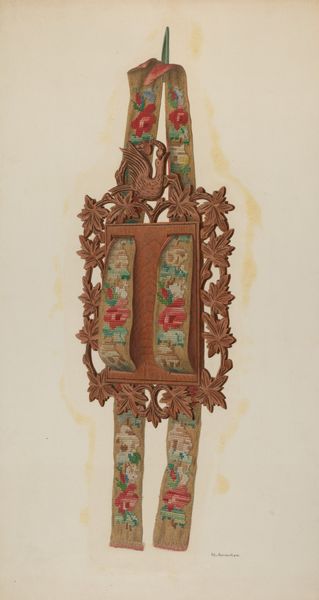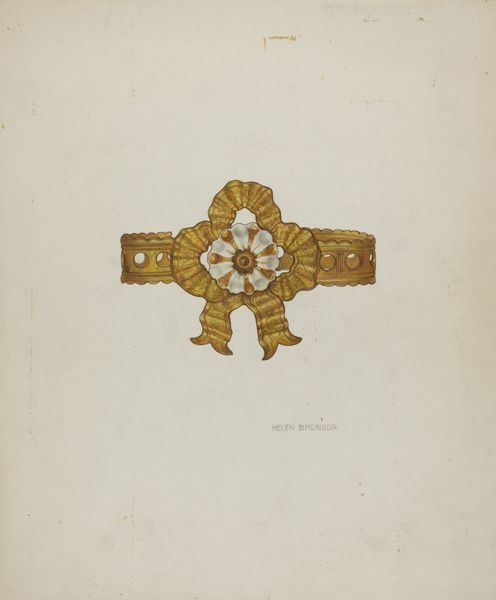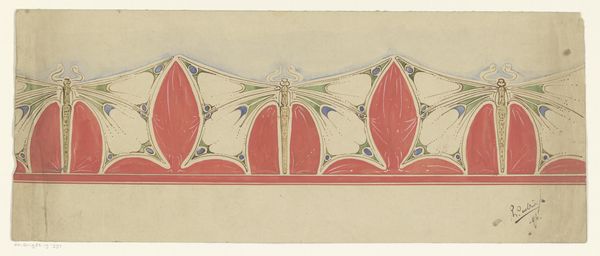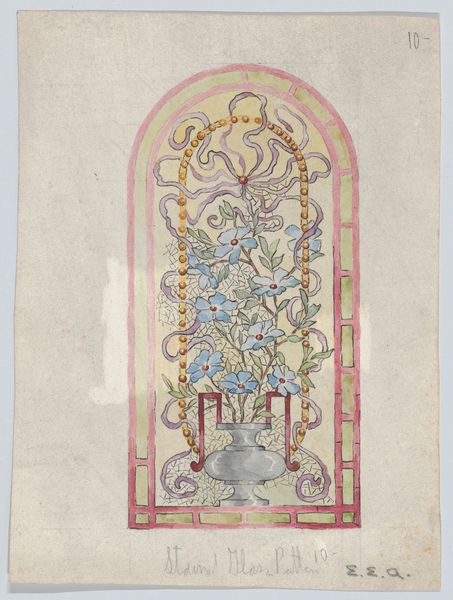
drawing, mixed-media, collage
#
drawing
#
mixed-media
#
collage
#
folk-art
#
watercolour illustration
#
decorative-art
Dimensions: overall: 35.5 x 24.4 cm (14 x 9 5/8 in.) Original IAD Object: 21"x11" (exact)
Copyright: National Gallery of Art: CC0 1.0
Curator: Immediately striking is the almost quaint formality of this cross. The subdued colours and stylized flowers… there’s a unique sensibility at play. Editor: Yes, there’s something immediately inviting, almost unassuming about it. Its materials suggest accessibility. Perhaps originally designed for personal, home use? Curator: Precisely. What we're looking at here is a piece entitled "Tin and Painted Glass Cross, Church or Home Use", dating to around 1936. E. Boyd is credited as the creator of this work, composed from tin, painted glass, and likely, collage. The artwork is considered part of the folk art movement. Editor: The cruciform shape is of course central, laden with layers of cultural meaning. It is one of the most universal and potent symbols in Western culture and many others; however, the overall form feels defamiliarized. It is less about conveying suffering, as with a standard crucifix. Instead, what is brought to mind is hope, the endurance and beauty of nature. What feelings does the rose inspire for you? Curator: Well, let's consider that these representations of roses aren't simply aesthetic choices; they speak to resilience and devotion, especially given their prominent use in certain religious traditions. The very choice of flowers blooming from a cross is arguably a feminist stance, subverting historically masculine-centred narratives. Editor: I concur entirely. The flowers feel like coded speech – messages transmitted outside traditional means and beyond words. It reminds one that flowers and, significantly, what’s considered “domestic arts” are commonly disvalued contributions made by women. But there are clues here too about specific spiritual lineages and networks, specifically through how the artist uses colour. Curator: I think that's a very nuanced perspective. Situating Boyd's use of color within her historical context reveals a profound engagement with gender, spirituality, and artistic expression, a fascinating subversion of social and artistic norms. Editor: Ultimately, it demonstrates how symbolic interpretation, when deeply rooted in culture and the artist’s choices, transforms simple forms into narratives that really do reshape how we see. Curator: And by engaging critically with art history and current socio-political dynamics, the piece enables a renewed perspective and recontextualizes historical ideas that have permeated contemporary values.
Comments
No comments
Be the first to comment and join the conversation on the ultimate creative platform.
